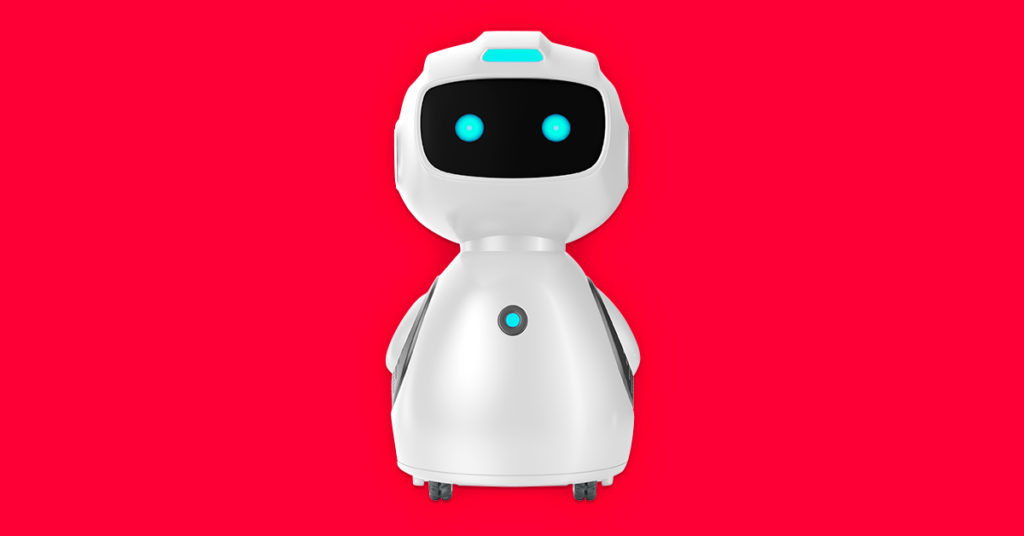
Home Robots and Amazon Astro: Exploring Next-Gen Smart Tech
You know all those smart connected devices in your home? Those smart hubs, electric outlets, video doorbells, vacuums, dog-monitoring cameras, smoke detectors, thermostats, security cameras, voice assistants, lightbulbs, appliances and more? Always more. One day soon, a single home robot will likely replace them all. The technology to simplify all that monitoring is closer than you think.
How do home robots work?
The new home robot models currently hitting the market combine much of the technology in current smart devices, such as artificial intelligence (AI) technology used in smart vacuums to learn the layout of a home. By using sensors, for example, the robots can avoid objects. However, the addition of depth cameras on home robots makes it easier for the robot to determine the distance between objects.
To control the robot assistant, users connect the robot via a smartphone app. Many personal assistant robots also function similarly to voice assistants with the ability to respond to questions and commands. Some robots also are now using facial recognition technology to learn to recognize family members and trusted friends for home monitoring security solutions.
What is the Amazon Astro?
A device with a lot of buzz, the Amazon Astro is like an Alexa+ on wheels. It features a combination of capabilities you would otherwise need more than one device to do for you. The newly introduced robot (currently available exclusively by invitation from Amazon) uses cameras and a periscope to monitor the home, even checking to see where another family member is located or if you locked a window. Connected through an app on your phone, the Amazon Astro includes an Echo, so you can ask about the weather, play music or anything else you would do with a voice assistant.
But the Amazon Astro home robot has more features than the Amazon Alexa, Echo or a plain old security camera. You can use the device’s handy cupholder to have Astro bring an item to another family member or set alarms for certain activities. Integration with other products is in the works, such as zip lock containers designed to fit Astro, dispensing treats through the Furbo dog camera and a blood pressure sensor. A third party is also expected to create more physical storage space, so Astro can pick up and deliver more, in size or quantity. You can also sign up for the Ring Pro Protect Plan for monitoring services for additional security and features such as notifications of unrecognized people in your home.
Amazon is also marketing Astro to help people ensure their loved ones who are living independently are safe. The robot can be programmed for regular checks and to help monitor health. This feature requires an extra monthly subscription called Alexa Together, which provides family and caregivers with updates, 24/7 urgent response and customized alerts.
Any downsides? Well, Astro cannot go up steps, so the robot can only be used on a single level. And its relatively short battery life of a few hours before requiring recharging (at a docking station) could be inconvenient if you intend to keep it running around.
How do home robots handle privacy?
While privacy concerns have been raised about voice assistants, the addition of cameras amps up the issue. Robot manufacturers have been proactively working to build privacy and security features into the robots. For example, Astro allows users to control what Astro sees and hears by turning off the cameras and the microphone with a single button. You can also set up the visual ID to ensure that others do not hack into the robot. Robot owners can also increase security by using secure internet connections and strong passwords.
When is your robot moving in?
While Astro has been making headlines in recent months, it’s not the only robot on the market. Samsung is currently piloting its version of the home robot called Bot Handy, which has similar features but goes beyond. Bot Handy stands much taller than Astro and has a segmented arm, which allows handling more tasks, such as unloading the dishwasher and pouring a glass of wine. However, you’ll have to wait—Samsung does not yet have a release date for this home helper.
Other tech companies worldwide are looking at robot possibilities, with some focus being turned even to emotional support. But when will they get a spot in our homes? Currently, the high price is outside the budget of many consumers, so mainstream robot adoption is probably six to eight years away.
Whenever the time comes for you to purchase your very own robot, it’s probably best to look for the model that has the right features and capabilities for your needs and a price point that’s affordable. It’s easy to see the future isn’t that far off. And once you get there, make sure your internet service gives you the reliability, speed and bandwidth to make the most of the new technology. Fiber service, if you can get it, is the right way to go.
Introduce your robot to Frontier Fiber with speeds up to 2Gig
Stepping up your smart home? Step up your internet connection with Frontier Fiber. Find out all you need to know. Then check here to see when it’s available at your address.
Product features may have changed and are subject to change.




I want one! C’mon Amazon! We’re good customers.
I want one
I’VE BEEN INTERESTED IN THE FUTURE OF THIS.
I want one ,You got to give it up! Lol, 😍😍😍😍
This is the way of the future,to help the aged,handycap and millions of things !